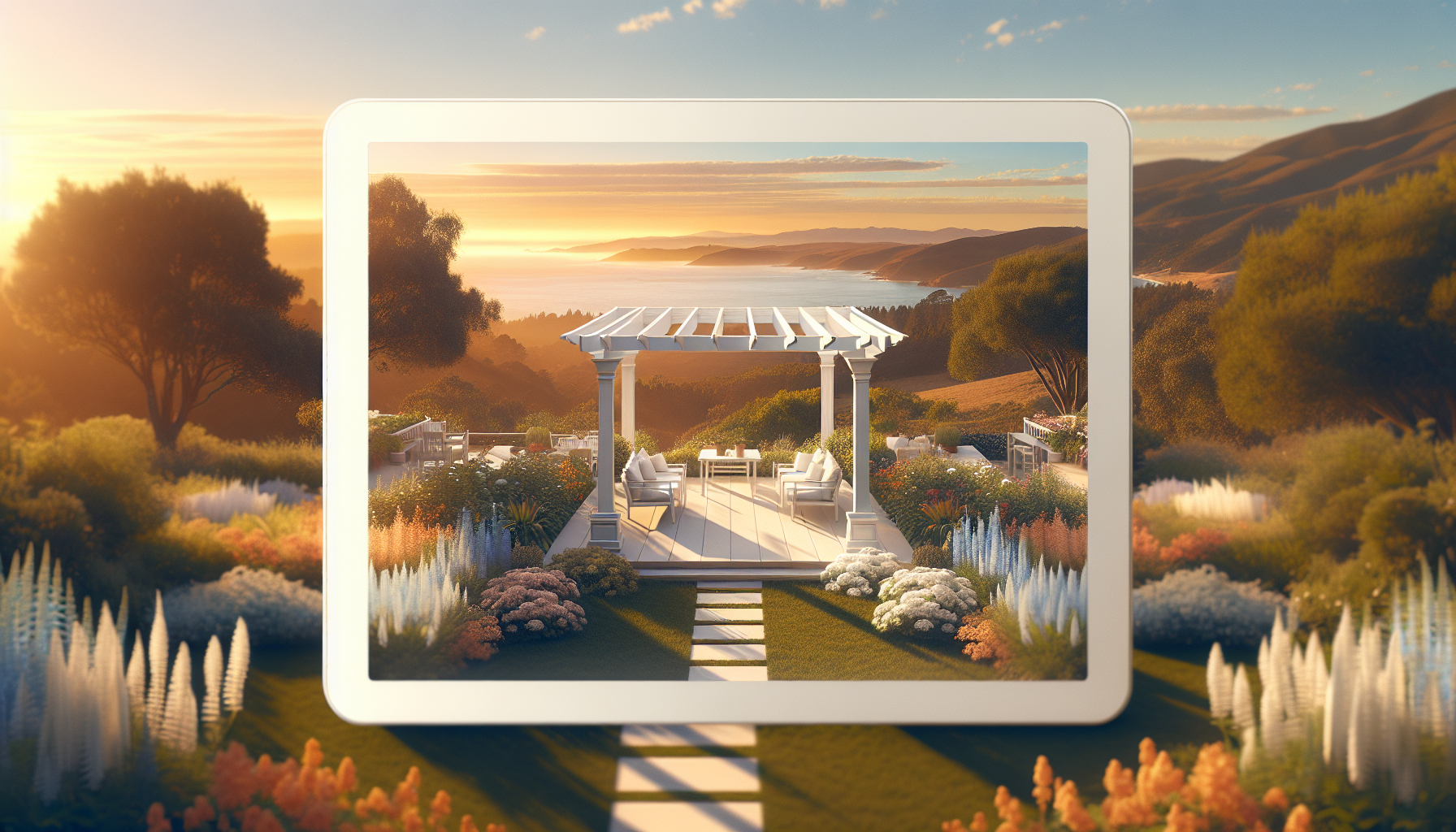Designing Your Dream Deck and Patio: Aesthetic and Functional Ideas
When creating a harmonious outdoor space, intertwining aesthetics and functionality is key to designing your dream deck and patio. A well-designed deck adds value to your property and serves as the perfect sanctuary for relaxation and entertainment. One of the first decisions in this process involves selecting materials that coincide with your visual preference and the demands of your climate; options such as natural wood, composite, or stone pavers offer varied textures and colors that can set the tone for your outdoor living area.
Another aspect to consider in your design is integrating indoor and outdoor living. Incorporating elements such as wide, retractable doors can create a seamless flow between the interior of your home and your deck or patio. Additionally, consider the inclusion of outdoor fireplaces or fire pits, which can serve as a central focal point and provide warmth on cooler evenings. Strategic placement of outdoor lighting can extend the usability of your deck into the evening hours while highlighting key design elements.
Incorporating Greenery and Shade
While hardscaping is the foundation of any deck or patio, adding softscaping elements such as planters, shrubs, and trees can add life and color to your space, creating a tranquil environment that encourages wildlife visits. Integrating retractable awnings or permanent roof structures provides shade on sunny days and defines distinct areas for dining, lounging, and activities. Choosing plants native to your region can minimize maintenance and ensure your garden thrives year-round, further enhancing the natural beauty of your deck or patio retreat.
Finally, the configuration of your outdoor furniture should be planned to maximize the utility and comfort of your space. Modular seating arrangements offer versatility for different gatherings, while built-in benches can offer permanent, cohesive seating options that maximize space. A mindful selection of colors and fabrics for outdoor cushions and accessories can establish a vibrant or serene outdoor atmosphere, complementing the overarching design theme of your deck and patio. Always prioritize durable, weather-resistant materials that promise longevity amidst various weather conditions.
DIY Deck and Patio Projects: Step-by-Step Guide to Building Yours
Creating a DIY deck or patio can significantly enhance your outdoor space’s aesthetic and functional appeal. It is a fulfilling project that adds value to your home and provides a great sense of accomplishment. Before diving into the process, planning thoroughly by researching building codes and obtaining necessary permits is important. This ensures that your construction is up to standard and legally compliant.
Materials and Tools for Your Deck or Patio
Choosing the right materials is vital for the durability and appearance of your deck or patio. Typical materials include wood, composite, pavers, or concrete. Depending on the chosen material, you’ll need a set of tools for construction. Essential tools often involve a circular saw, a drill, a hammer, a level, and a shovel for excavation. Selecting high-quality materials and tools is crucial to enable a sturdy and long-lasting structure.
Deck and Patio Design Planning
Designing your deck or patio should reflect your style and the functionality you desire. Consider the layout, dimensions, and integration with your landscape. Utilize design software or sketch by hand to visualize your project. When finalizing your design, be mindful of key elements such as drainage, sun exposure, and privacy. Proper planning in this stage will save you time and resources throughout the build.
Building Your Deck or Patio: The Execution
With thorough preparation, the execution phase is where your project comes to life. Begin by marking the area and excavating as needed. Set a sturdy foundation and follow your design plans to construct the frame. Pay close attention to the alignment and spacing of boards or pavers for a professional look. Consistent measurement and attention to detail are essential for a level and secure deck or patio. Safety is paramount; don’t hesitate to seek professional advice or assistance if needed during the build process.
Cost Effective Deck and Patio Solutions: Budgeting for Your Outdoor Space
Creating an appealing outdoor living area doesn’t need to drain your savings. With careful planning and creative solutions, you can have a budget-friendly deck or patio that serves as a charming extension of your living space. Budgeting for your outdoor project is a fundamental step determining the scale and quality of your deck or patio. First and foremost, it’s crucial to establish a clear and realistic budget that reflects the size of your outdoor space and your financial limits.
Choosing Inexpensive Materials
One of the primary aspects to consider when budgeting for your outdoor space is the choice of materials. While exotic woods and high-end composites might attract you with their looks and longevity, they often come with a hefty price tag. Instead, explore options such as pressure-treated lumber, which can be just as enduring when properly maintained and is much more affordable. Additionally, concrete pavers are a great alternative to more expensive natural stone, providing the same functionality at a fraction of the cost.
DIY Options to Cut Costs
Tackling some aspects of the construction process yourself can significantly reduce the total cost of your deck or patio. Simple platforms, for instance, don’t require complex skills or tools and can save you money you would otherwise spend on labor. Numerous resources and guides available online can help even those with basic handyman skills build a safe and sturdy outdoor area. Remember to consider the value of your time, though—DIY is cost-effective only if it doesn’t interfere with your ability to earn elsewhere.
Crucial to budgeting for your deck or patio is prioritizing features based on cost and necessity. Features such as built-in seating and planter boxes might be visually appealing, but you need to determine if they fit within your budget constraints. Often, selecting multi-functional furniture and accessories can offer savings. For instance, a simple bench can double as storage space and DIY cinder block planters can add greenery without breaking the bank. By carefully assessing what’s essential for your outdoor space, you can allocate your budget wisely, ensuring that you cover aesthetic and functional needs without financial strain.
Remember, the goal is to create a cozy and inviting outdoor area that meets your needs while staying within your budget. With smart planning and careful selection of materials and features, you can enjoy the benefits of an upgraded outdoor space without overspending.
Maintaining Your Deck and Patio: Tips for Longevity and Upkeep
Regular Cleaning is Fundamental: The first step in maintaining your deck and patio is establishing a consistent cleaning schedule. Over time, dirt, leaves, and other debris can accumulate on the surfaces, fostering mold and mildew growth that can lead to wood decay and unsightly stains. Sweeping your deck weekly can prevent debris build-up, and an occasional deep clean with appropriate cleaners will preserve the integrity of the wood or paving. It is crucial to use cleaners suitable for your specific deck and patio materials to prevent any damage.
Seal and Protect Your Investment: Wood decks require a sealant to protect them from sun and rain weathering effects. A high-quality sealant can prevent water from seeping into the wood, which minimizes rot and warping. Sealing the pavers or stones for patios can protect against stains and enhance their appearance. Resolving your deck or patio every two to three years is typically recommended, but this may vary based on climate and usage. Remember, a sealed surface is easier to clean and can resist the elements better than an unsealed one.
Immediate Repair is Essential: When you notice damage, such as loose boards or cracked stones, it’s important to repair them promptly. Ignoring minor issues can lead to more significant problems, such as structural concerns that could compromise the safety of your deck or patio. By addressing repairs as soon as they arise, you can prevent more extensive damage and higher costs. If you’re uncomfortable making repairs yourself, consider hiring a professional to ensure the work is done correctly.
Deck vs. Patio: Which One is Right for Your Home?
When considering an outdoor living space, homeowners often wrestle with the decision between installing a deck or a patio. Both offer a relaxing environment and contribute to the overall aesthetic and functionality of your home, but they have distinct differences that may make one more suitable for your lifestyle and the geographical features of your home.
Understanding the Differences
Decks are typically constructed from wood or composite materials and are raised off the ground. This elevation can provide better views of your surroundings and be beneficial if your property is uneven or sloped, as it allows for a level of entertaining space. Decks may require more maintenance, especially if made from wood, which needs regular sealing and staining to prevent rot and warping. In contrast, patios are paved areas that sit directly on the ground and can be made from various materials, including concrete, bricks, pavers, or stone. Patios often require less maintenance and integrate seamlessly with your garden or outdoor landscape, encouraging a more natural flow from indoors to outdoors.
Considerations for Climate and Usage
Your local climate is an important factor to consider when deciding between a deck and a patio. A deck might be preferable if your home experiences a lot of rainfall, as the elevation allows for quick drying and better drainage, reducing the risk of water damage or pooling. However, in areas with intense sun exposure, a patio could be more durable as materials like concrete and stone resist the warping and fading that can affect wooden decks. Additionally, think about how you plan to use your outdoor space. A patio may offer a better foundation if you enjoy gardening and intend to incorporate landscaping into your outdoor design. On the other hand, if you appreciate elevated views and prefer a separate outdoor area that stands out from your yard, a deck might be the right choice.
Cost and Longevity
Cost is often a deciding factor for many homeowners. Generally, patiles are less expensive than decks, in both materials and labor. The longevity of your outdoor space is also directly tied to both cost and the type of structure you choose. Patios, especially those constructed from high-quality stone, can last for decades with minimal maintenance. In contrast, decks—particularly wooden ones—may have a shorter lifespan and will likely incur higher maintenance costs over time. It’s essential to evaluate both the upfront cost and the long-term investment to ensure your selection aligns with your financial plans and lifestyle.
By carefully weighing the unique benefits and considerations of each outdoor space option, you can make an informed decision that enhances the enjoyment and value of your home. Whether you choose the raised elegance of a deck or the grounded harmony of a patio, both can create a tranquil outdoor haven for you and your loved sketching to life.
Remember, the choice between a deck and a patio must be made based on personal preference, maintenance willingness, and how the space complements your home’s existing structure and landscape. When done thoughtfully, selecting the right option will provide you with a peaceful retreat and a venue for unforgettable moments with family and friends for years to come.




